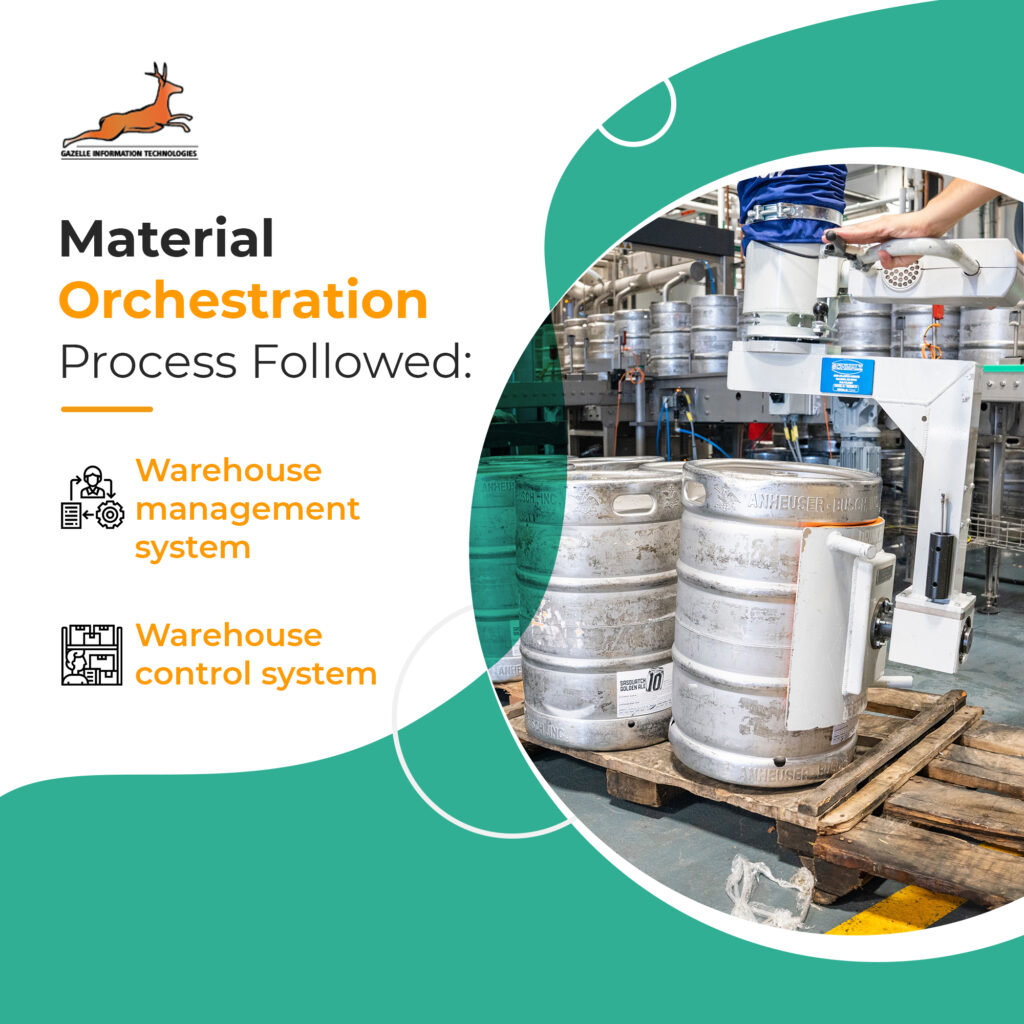Material Orchestration
Transformation Spectrum

- PAST
- PRESENT
- FUTURE
Technology Used:
- Maintaining physical stock records
- Physical verification
Process Followed:
- Counting stock
- Manual reorder level
Technology Used:
- ERP
Process Followed:
- Warehouse management system
- Warehouse control system
 Technology to be used:
Technology to be used:
- Robotics
- Automation
- Real time visibility
- UWB devices
- Sensors
Process to be followed:
- WES solution
Past
1. Technologies Used
Maintaining physical stock records – Though maintaining physical stock records can be tedious but it helps in finding out which material have we missed and which has gone bad etc.
Physical verification – The process of actually counting, weighing, and measuring all items in stock, recording the results, and making sure that the materials match the nomenclature, description, specification given in the inventory book.
2. Process Followed
Counting stock – The process involves a team of workers going through the sales floor and the retailer’s warehouse and counting each item. Allows you to accurately track the physical inventory you have, what sells and what doesn’t. You can compare the physical inventory to what the report says and then look for any discrepancies.
Manual reorder level – The reorder level is the inventory level that triggers the replenishment order. In practice, the change point is often set based on the desired level of service that is planned. The service level is the percentage of requests that are fulfilled the first time from the warehouse.
Present
1. Technologies Used
ERP – ERP automates demand planning, creating demand upon receiving orders. After receiving the order, the software performs the planning. Team members can see real-time information about how resources are being used in production and can better plan production tasks and product deliveries.
2. Process Followed
Warehouse management system – A software solution that provides visibility into an enterprise’s entire inventory and manages supply chain fulfillment operations from the distribution center to the store shelf.
Warehouse control system – Specializes in managing the flow of inventory within a company’s distribution center(s). Ensures efficient product flow across various material handling facilities and subsystems.
Future
1. Technologies Used
Robotics – Help reduce/eliminate errors, accelerate order fulfillment, reduce overhead and operating costs, and facilitate better inventory management.
Automation – Automated material handling systems ensure the efficient transport of material from one area to another in a production area – within the same department or production hall, at opposite ends of a production floor or even two separate buildings. AMHS uses route and process step information provided to move material using conveyors, vertical lifts and autonomous vehicles.
Real time visibility – Basically means live information that allows you to check the route of objects and their exact location at any point. This will allow you to understand what is actually happening, under what conditions, and prevent potential problems.
UWB devices – UWB technology enables safe range and accurate sensing, creating a new dimension of spatial context for wireless devices.
Sensors – New sensor technologies are quickly becoming the standard product of tomorrow as equipment designers, manufacturers and operators seek greater efficiency, better performance and the highest possible level of safety.
2. Process Followed
WES solution – A software application that optimizes facility management. Are computer systems used in warehouses and distribution centers to manage and organize the physical flow of products from receipt to shipment.
The future of Material Requirement Planning in Supply Chain w.r.t to Technologies and Processes
- The material requirement is a system for calculating the materials and components needed to manufacture a product.
- The material requires planning (MRP) is a great way for manufacturers to manage their shops and include inventory.
What is the goal of material requirements?
The main goal of MRP Material Requirement Planning is three main goals:
- Ensure the right material for production and finished goods are available for delivery to the customer
- Enable end-to-end production planning
- Manufacturing control by maintaining the required stock level
Importance of Material requirement planning in Supply Chain
The material requirement planning helps to ensure that there are enough materials and components available for production.
It also helps to determine how much-finished goods and by what date will be available for shipping customers.
Future of Material Requirement Planning in Supply Chain
The MRP is going to make sure that materials and components are available when needed. Some of the additional benefits are:
- It will reduce customer lead time to improve customer satisfaction
- Reduce inventory cost
- Effective inventory management and optimization
- Improve labor productivity
Future of technology used for Material Requirement Planning in Supply Chain
The MRP of the business cycle is moving faster than ever and supply chain are more connected, business is finding new ways to improve material planning.
Five ways that MRP technology is changing as result:
- Big Data and Analytics
- The internet of things
- Mobile Technology
- Advanced Robotics
- Autonomous Vehicle
Future of process used for Material Requirement Planning in Supply Chain
MRP system is one of the benefits to your production facility, it works because it is a well-organized framework of processes and calculations.
Just in Time refers to manufacturing resource planning that focuses on the future and is time-phased.


